Your feedback: results of the 2018 IVVN members' survey
At the end of 2018, we sent a survey to all IVVN members to ask for their opinions on what the network was doing and how it could help them achieve their scientific goals. We received 98 responses – around a fifth of our membership at the time.
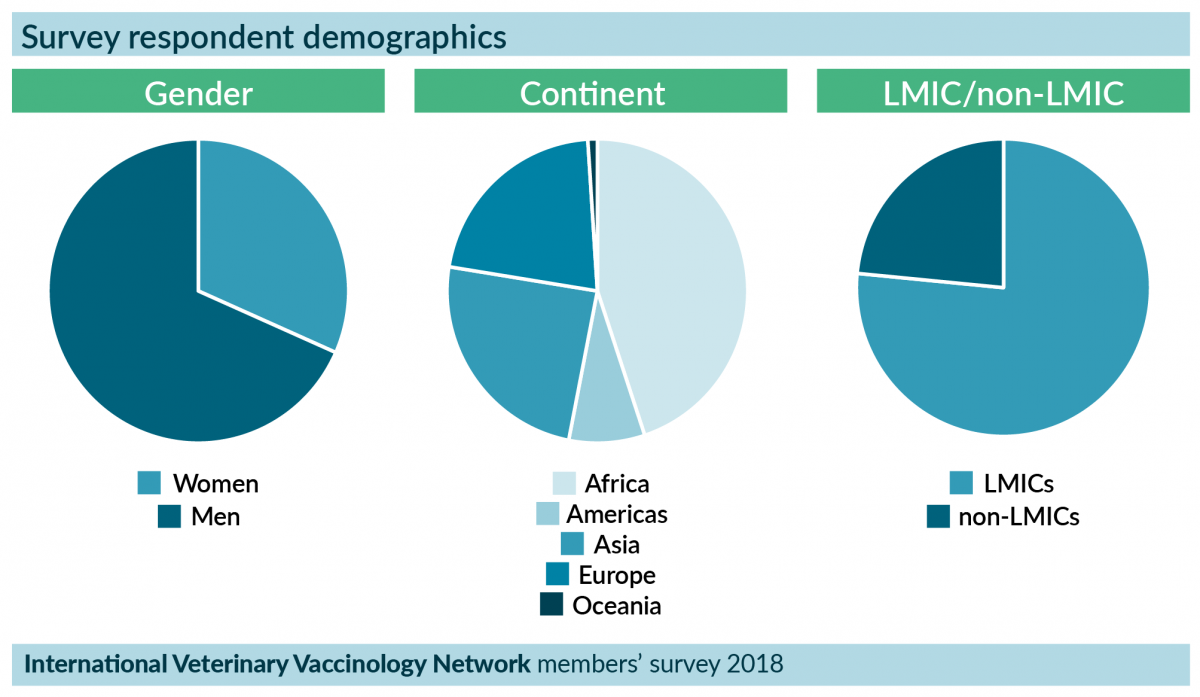
Demographic breakdown of survey respondents.
As we launch our second members’ survey, we thought we would tell you what we found out last time and some of the ways we have responded to our members’ comments.
Question 1: research barriers and challenges
The first question we asked in our survey was about the challenges and barriers that impeded the completion of members’ scientific research. Perhaps unsurprisingly, a lack of funding was the biggest issue identified, with 84% of respondents saying this was a barrier facing their research. A lack of collaborative opportunities (57%) and a lack of access to scientific equipment (41%) were also cited by many.
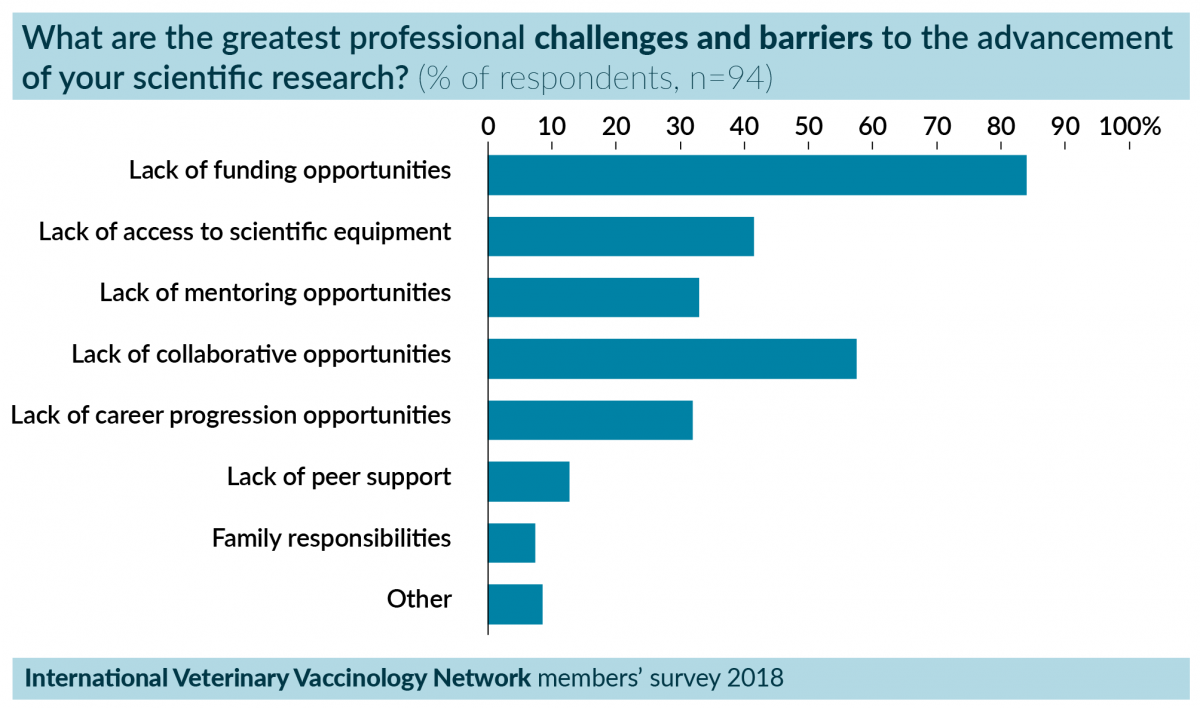
All responses to question 1, which asked “What are the greatest professional challenges and barriers for the advancement of your scientific research?” The data shown exclude four respondents who said this question was not relevant to their work (n=94).
We continue to try to make as much funding as possible available for scientific research. We are proud that we have managed to fund 13 pump-priming projects even though our original budget only provided for 10. However, funding limitations will probably always remain a barrier despite everyone’s best efforts!
Facilitating collaborations is core to the IVVN’s aims, and we hope that our networking opportunities and members’ database will continue to address this issue. Indeed, when asked about the benefits of being IVVN members, 82% of respondents said that their membership gave them opportunities for new collaborations (see question 2, below).
The same three challenges were especially prevalent in members from low- and middle-income countries (LMICs), with 88% of LMIC respondents citing funding as a barrier, 63% citing collaborative opportunities and 48% citing access to equipment. We are currently working to establish an equipment exchange programme for IVVN members, which will focus on widening access to laboratory equipment in LMICs, and we will keep you updated on how this develops.
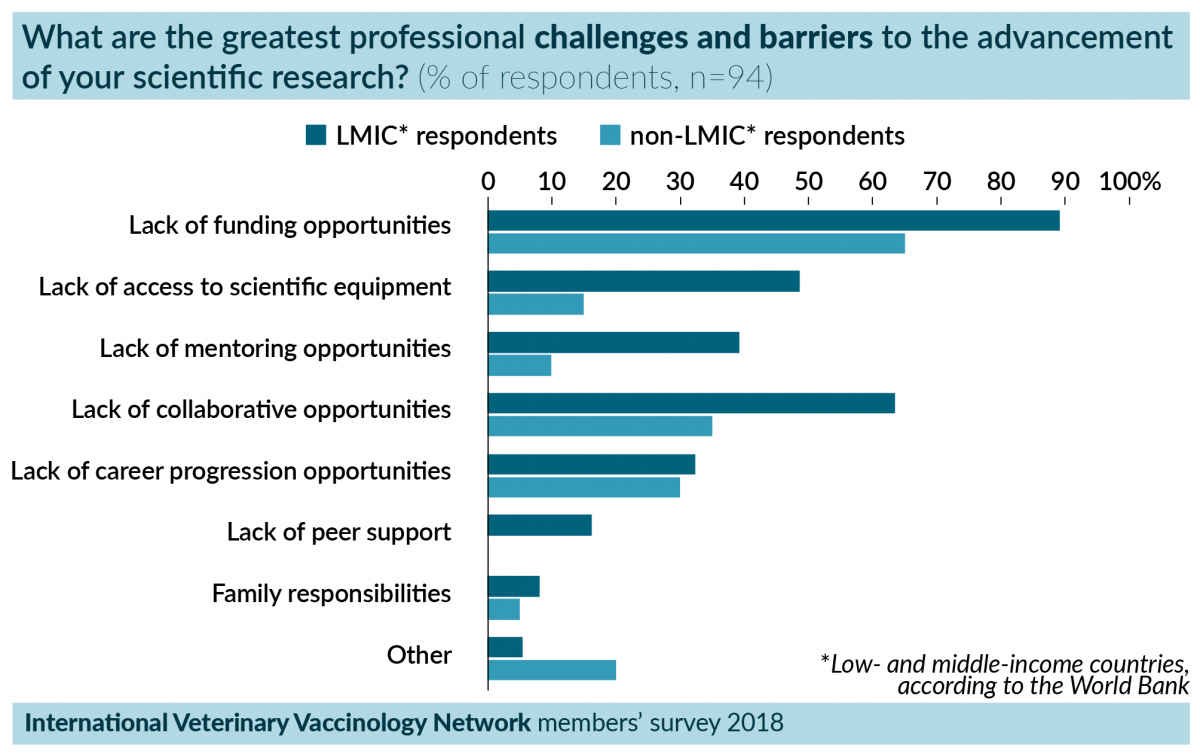
Responses to question 1 (“What are the greatest professional challenges and barriers for the advancement of your scientific research?”), weighted according to whether respondents worked in low- and middle income countries (LMICs, n=74) or not (n=20), according to figures from the World Bank. Excluding four respondents who said this question was not relevant to their work.
Another barrier experienced by many LMIC researchers was a lack of mentoring opportunities. This was cited most by women from LMICs, with 46% describing this as a barrier, compared with 36% of men from LMICs and 33% of women from high-income countries. No men from high-income countries said a lack of mentoring was a challenge for them. In response to this result, we are happy to announce a new mentoring fellowship scheme for female researchers in LMICs, working with our partners at Canada’s International Development Research Centre.
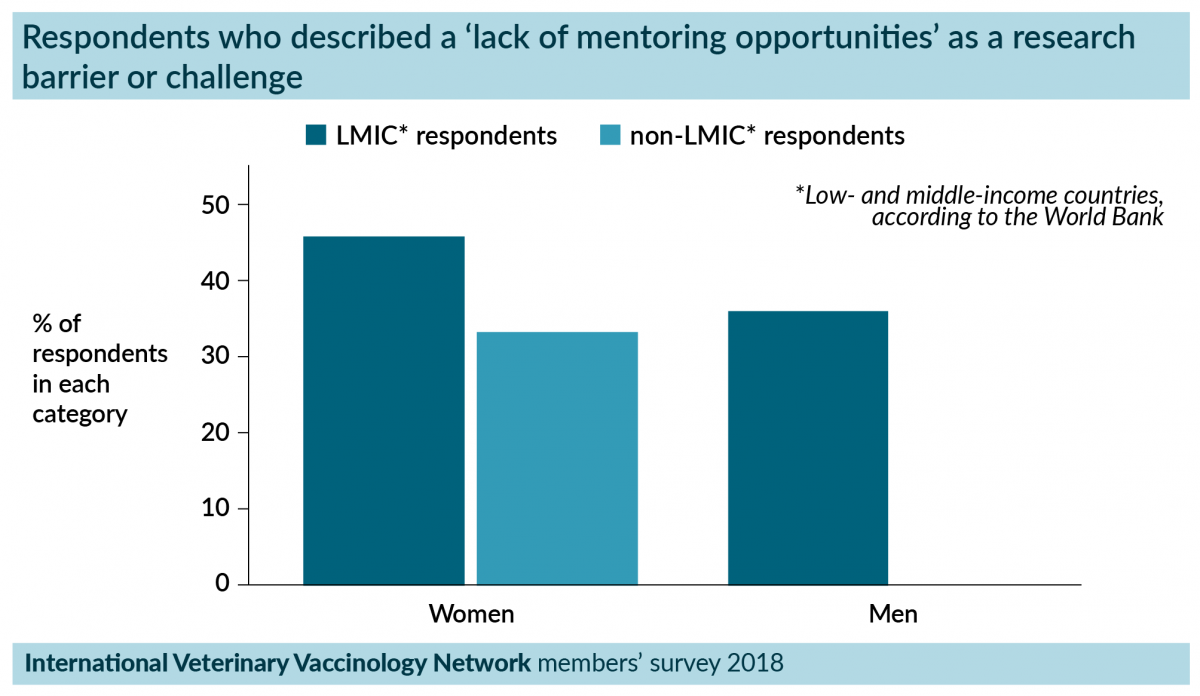
Respondents who described a lack of mentoring opportunities as a barrier in question 1 (“What are the greatest professional challenges and barriers for the advancement of your scientific research?”), weighted by gender and by the World Bank income levels of the countries where respondents work (low- and middle income countries, LMICs, and high-income countries, non-LMICs).
Question 2: benefits of IVVN membership
The second question asked what the most important benefits were of IVVN membership. We were pleased to see that the IVVN appeared to bring multiple benefits to many of the respondents, and each of the five options we gave was chosen by more than 50% of respondents. The most popular benefit of membership, cited by 82% of respondents, was the opportunity for new collaborations, which we hope can help address the lack of collaborative opportunities reported by many in response to question 1.
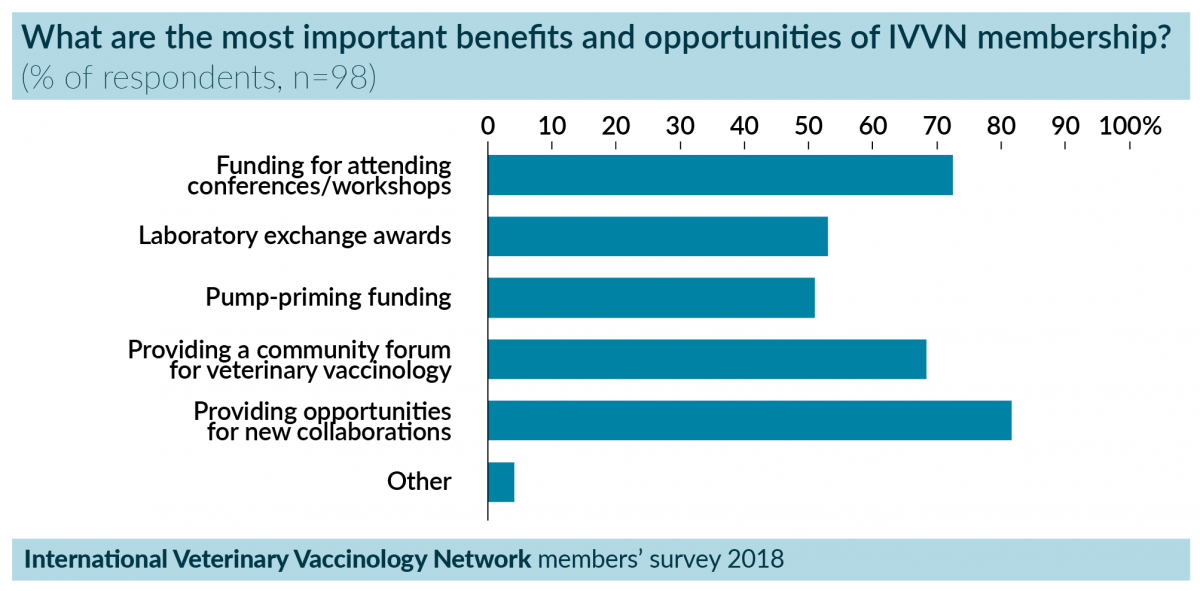
All responses to question 2, which asked “What are the most important benefits and opportunities of IVVN membership?” (n=98).
Another popular benefit among respondents was the way in which the IVVN provides a community forum for veterinary vaccine research (chosen by 68% of respondents). This role is key to what we hope to achieve and we hope that the recent recruitment of Dr Mabon Elis as the network’s communications assistant will help reinforce this component of the IVVN’s activities.
Two benefits of membership were much more popular with respondents from LMICs than those from high-income countries: funding for attending conferences (83% for LMIC respondents, 39% for non-LMIC) and opportunities for laboratory exchange awards (60% and 30%, respectively). It was good to see that respondents valued the provision of IVVN scholarships to attend meetings. This scheme is continuing, with 25 early-career and LMIC researchers awarded scholarships to attend our 2020 conference in Hanoi, Vietnam. We are also proud of our laboratory exchange programme, which helps researchers, especially those early in their careers or working in LMICs, learn new scientific skills and develop collaborations.
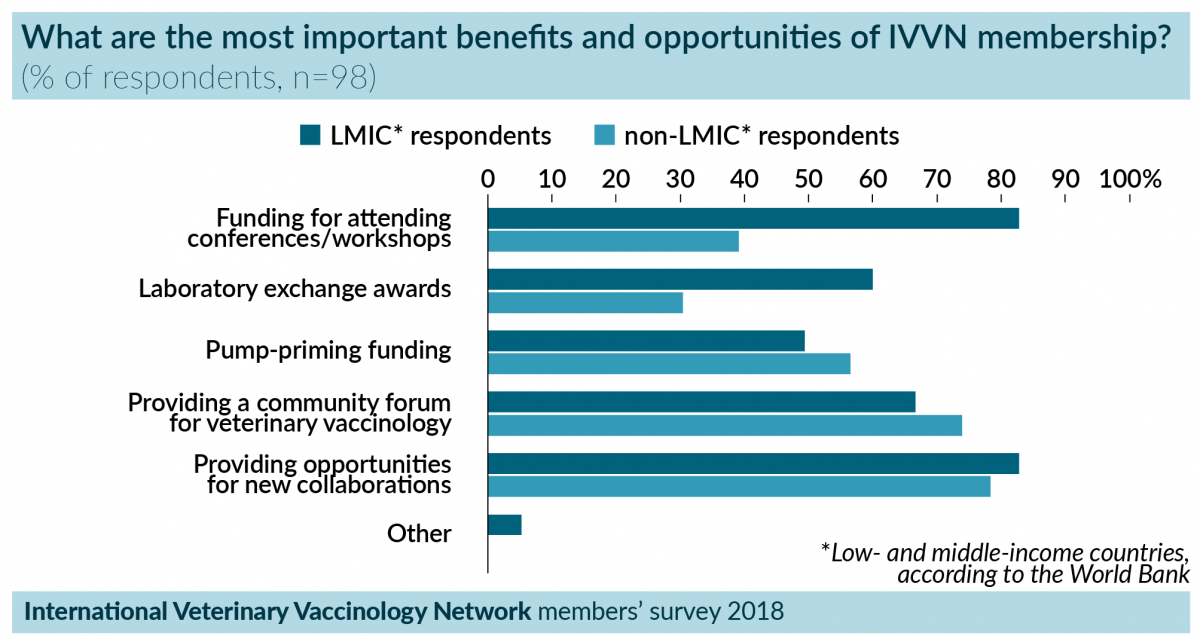
Responses to question 2 (“What are the most important benefits and opportunities of IVVN membership?”), weighted by whether respondents worked in low- and middle income countries (LMICs, n=75) or not (n=23), according to figures from the World Bank.
Question 3: what the IVVN could be offering
The final question we asked our members regarded additional opportunities and activities the IVVN could offer. The most requested activities here were training in scientific skills (74%), more community/cohort opportunities (56%) and opportunities for mentorship (54%).
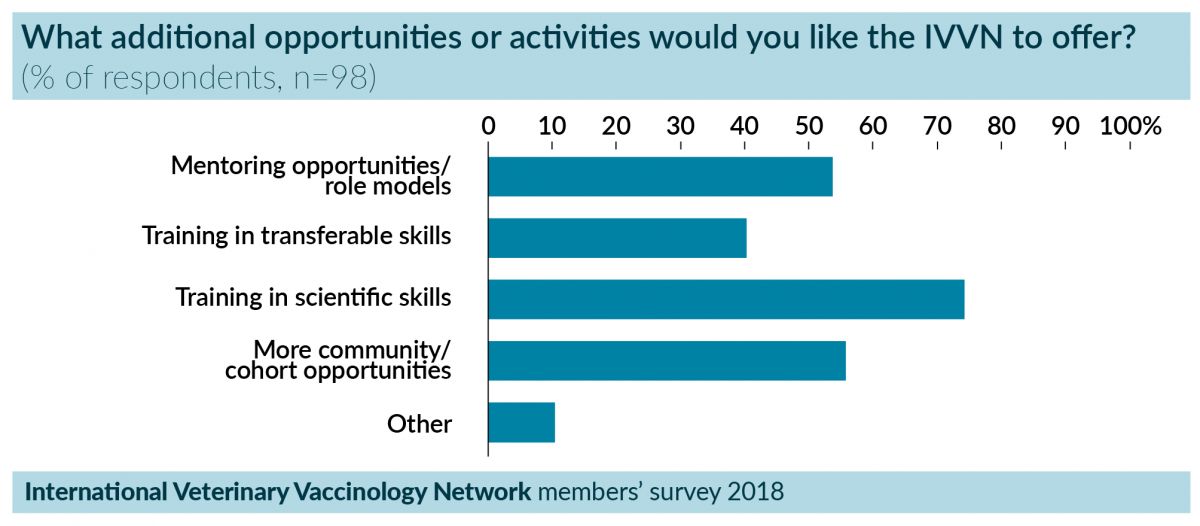
All responses to question 3, which asked “What additional opportunities or activities would you like the IVVN to offer?” (n=98)
Training in scientific skills is not included in the IVVN’s current network remit (although the laboratory exchanges aim to provide opportunities for technology training and transfer), but this is something we will try to incorporate into a future application for continued funding.
It was notable that several members added ‘webinars’ as an additional answer to question 3. The network management board has discussed the IVVN hosting webinars in the past, and the survey results suggest this is something members want too – so we hope to explore hosting some trial webinars later this year.
Mentoring and training opportunities were especially sought by LMIC respondents, with 61% asking for mentoring, 51% asking for training in transferable skills and 83% wanting the IVVN to offer scientific training.
Mentoring opportunities was a recurrent theme in the feedback we received, and we hope our fellowship programme will begin to address this, especially for female researchers from LMICs. We have also started discussions with African Women in Agricultural Research and Development (AWARD; https://awardfellowships.org/) to see how we can work together. We hope that our partnership with AWARD can especially help the IVVN African Schools Outreach Programme, which aims to inspire school students in Africa into careers in science.
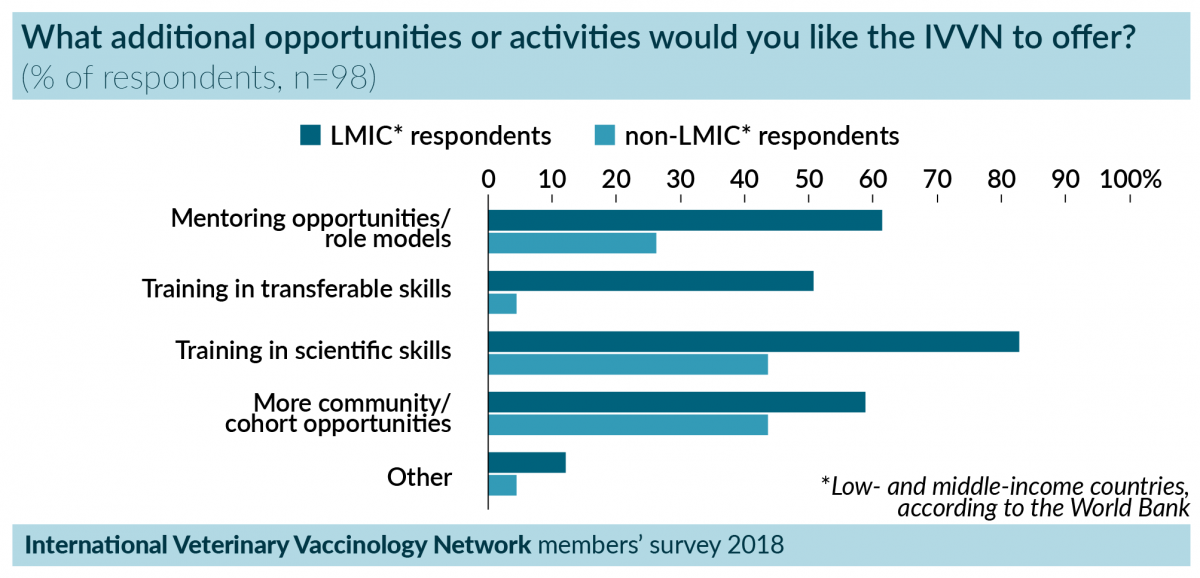
Responses to question 3 (“What additional opportunities or activities would you like the IVVN to offer?”), weighted by whether respondents worked in low- and middle income countries (LMICs, n=75) or not (n=23), according to figures from the World Bank.
Our members’ feedback is vital to the success of the IVVN, and will work to incorporate as many of these suggestions as we can into our future activities. We urge members to check their inboxes for a link to the 2020 members’ survey. If you are not a member, you can join for free and help shape the network’s future. And if you have any additional comments about the network and our activities, IVVN [at] roslin [dot] ed [dot] ac [dot] uk (subject: Network%20feedback) (your feedback is always welcome).
